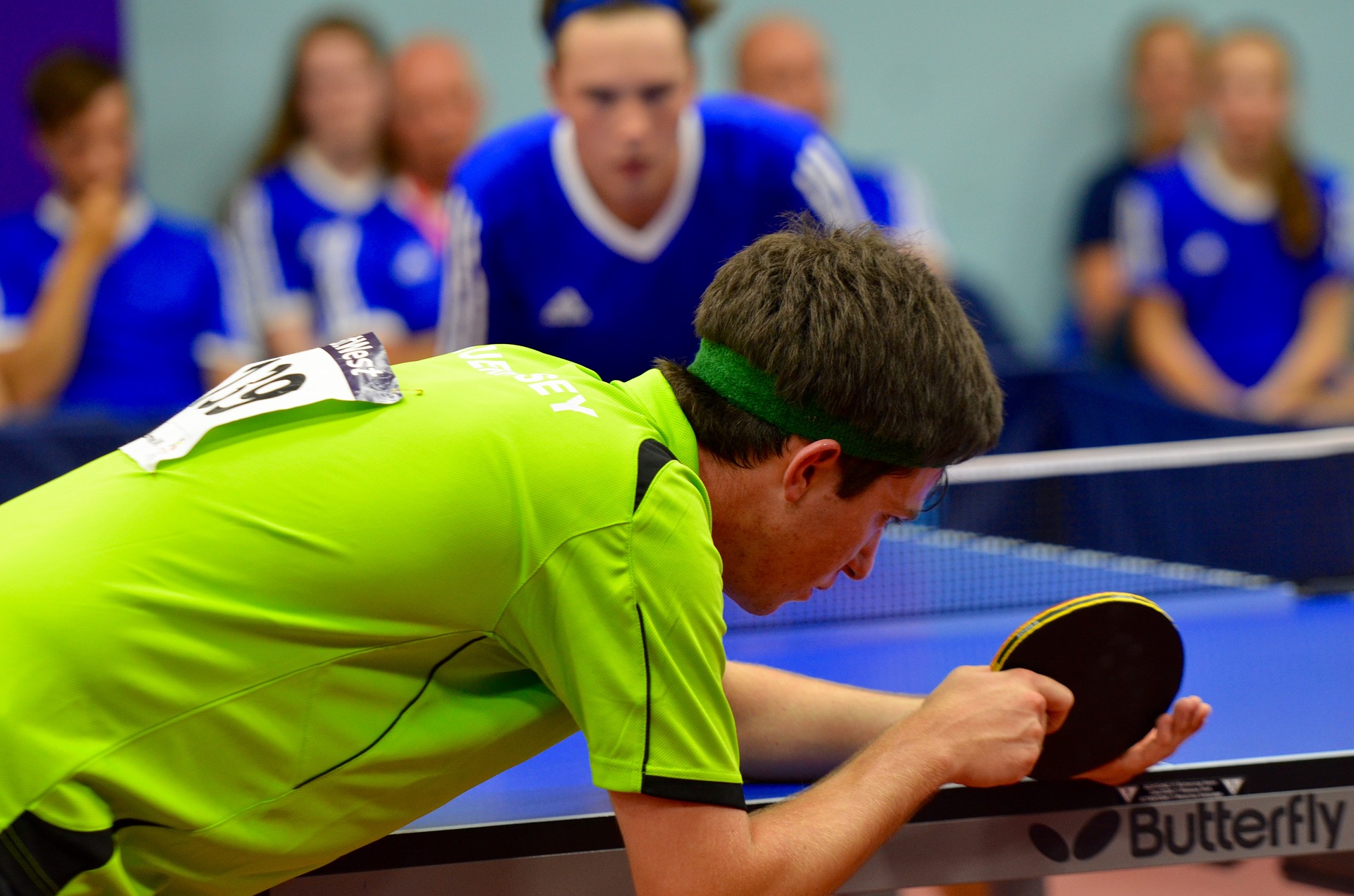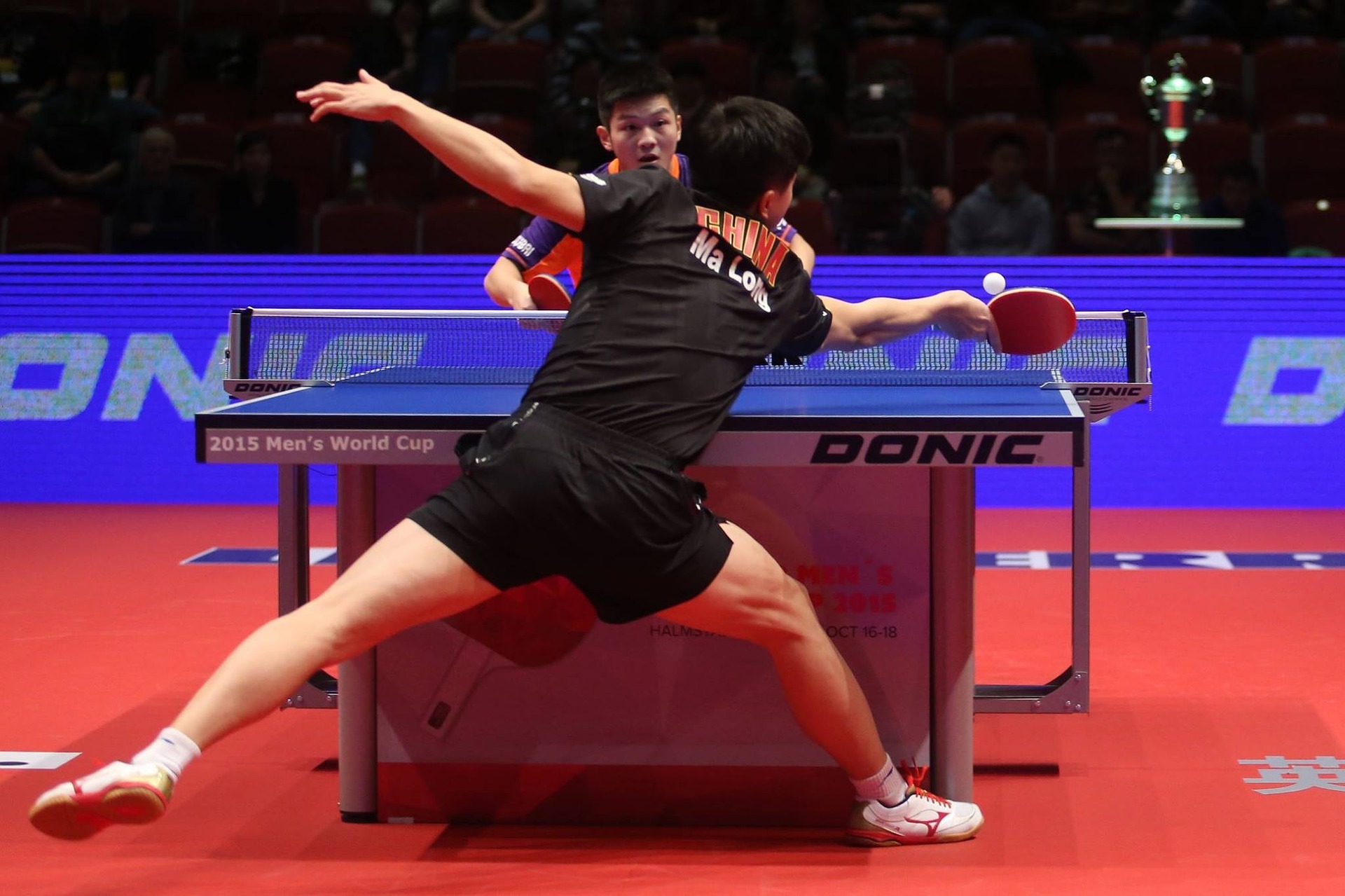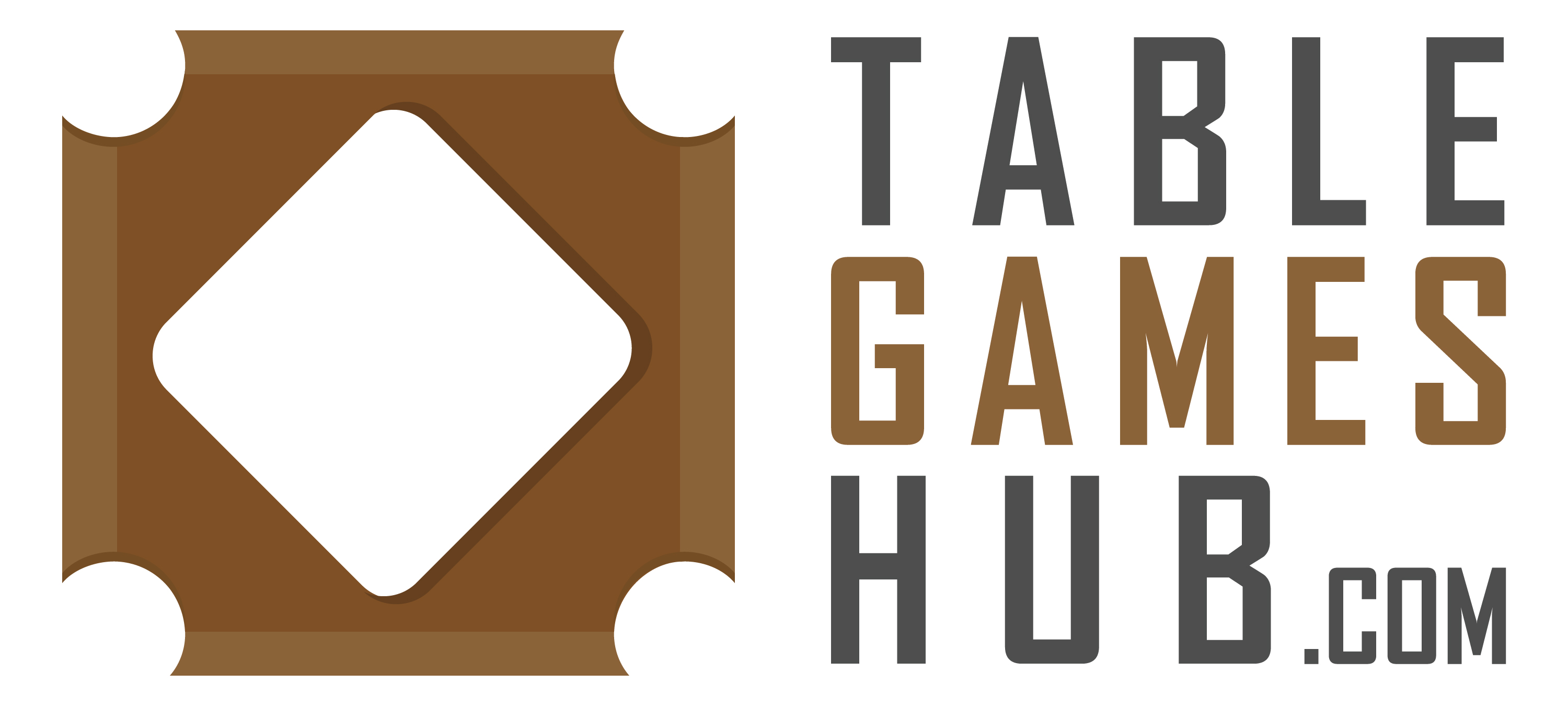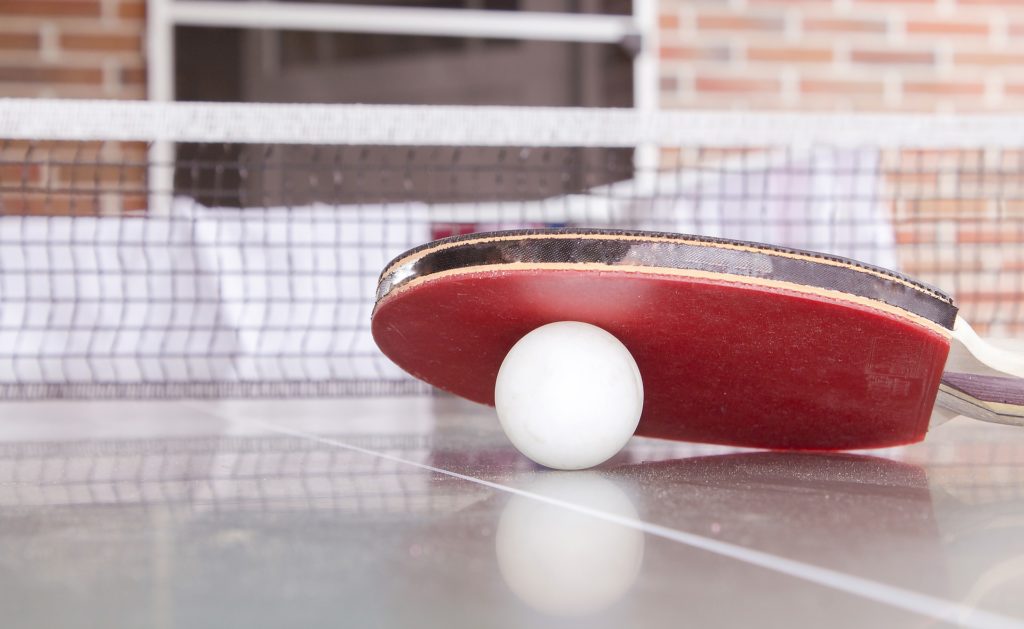Ping Pong is an international sport that has been taken very seriously in recent years.
There are tournaments and all sorts of clubs dedicated to serious players.
If you have had the privilege of playing the game, you know how addictive it can be, and you’re new to a wonderful world.
But there is so much that you have yet to learn.
We’re going to be showing you a little more about Ping Pong/table tennis.
True, it might take years to learn everything you need to know about the game, but we’ll just give you everything you need to know for now.
A Brief History
The game started as a parlour game in the late 1800’s. Anyone could play the game as long as they had a table, a paddle and a ball.
The name Ping Pong was created by the English firm J. Jacques and son, and later trademarked by Parker Brothers, the American board game firm.
The game grew in popularity, and soon tournaments were being hosted by The Table Tennis Association.
Slowly, the game began to spread to the rest of the world, and the game is only growing today.

The sport is so popular that it has been recognized as an Olympic sport, appearing first at the games in Seoul in 1988.
The men’s singles match at the last games was watched by more than 2 billion people! And in China, the sport is played at work, at school and anywhere else really.
Table tennis athletes receive the same recognition as national heroes and pop stars, so you can just imagine how popular the sport has become.
Although this was a rather brief history, table tennis has had a rough time getting where it is today, and it hasn’t always been smooth sailing, but it has come far despite many difficulties.
Today, the International Table Tennis Federation (ITTF) is the reigning authority in the table tennis world.
When you want to know anything about the sport, you can go to their website.
The Objective
The overall point of the game is to win the match, by winning enough points to win more than half of the games played between you and your opponent.

A point is won when the opponent cannot hit the ball over the net and onto the other side of the table.
The game is won when you are the player/team to win more 11 points. You also have to be 2 points ahead of your opponents.
In the event of a 10-10 tie, then each server only serves one point before switching.
After the game, the servers will switch sides. In the final game, the servers switch sides after one of the players reaches 5 points.
- This is because it is easy on the body, and tables come in all sizes, so it doesn’t matter at what age you begin playing.

In the event of a 10-10 tie, then each server only serves one point before switching.
After the game, the servers will switch sides.
In the final game, the servers switch sides after one of the players reaches 5 points.
Legal Serve
The ball has to rest on an open palm, then the player must toss it up at least 6 inches and then hit, so that the ball bounces on the server’s side and then the opponent’s side.
If the serve is legal, but it touches the net, it is called a let serve. These serves aren’t scored and are reserved.
Equipment:
Your paddle must have a red and a black side. The ball can be either white or orange, and 40 mm in size. The tables are 2074 meters long, 1.525m wide and 0.76m high.
How to Play
Have we got your attention yet? Table tennis is a unique game in more ways than one.
That’s why we’re going to tell you how you can play the game, so that you can become a champion if you want to.
Step 1
You need to improve your hand-eye coordination, so start by playing against a wall.
It won’t be the most exciting game in the world, but your coordination will improve enough so that you can eventually play against a human.
Once you have successfully beat the world, you need to find a suitable partner.

Find someone who is on the same skill level as you and who isn’t incredibly competitive.
That quality is good for later practice, but as a beginner it will just be unpleasant for you.
Step 2
Before you make it into the big leagues, you need to know how to hold your paddle.
First off, you need to make sure that your grip isn’t too tight.
Hold it loosely so that your wrist can move freely. There are 2 grips that you can use.
You can use the pen-hand grip, which is when you hold the paddle like you would hold a pen.
The second is a shake-hold grip, where you grip the paddle as though you were shaking a hand. Neither is a must.
You have to use the one that feels the most comfortable to you.
Step 3
To start the game, you need to decide who gets to serve first.
In ITTF tournaments, this is chosen by lot (drawing lots or flipping a coin) the winner then decides whether they want to serve first or not.
But in most recreational games, the winner is chosen by a quick rally. Each player serves and a point earns a letter, until one player has spelled out PING.
It is up to you to decide how you want to choose who serves first.
Step 4
The server needs to throw the ball up with an open hand, and must hit it so that the ball bounces on his side first and on his opponent’s side second.

When playing singles, the serving turn alternates between you and your opponent.
But in a doubles game each player on a team hits 2 points before switching to the opponent’s side.
If you hit a let serve, the serve has to be repeated and no point is awarded. When the game ends, the loser has to serve first.
Step 5
The ball is returned when you hit it over the net in response to your opponent’s serve.
Once the ball bounces on your side once it must be returned, but before it hits the floor or any other object on the table, or before it bounces twice.
If the ball hits the net but still returns to your opponent’s side, then the ball is still in play.
Step 6
Scoring a point seems easy on paper, until you try and do it in real life, but here is the gist of it.
If your ball goes into the net, or off the table then your opponent receives a point.
When you don’t make a legal return (this is where your ball goes into the net and doesn’t hit your opponent’s side) then your opponent gets the point.
If you hit the ball more than once while it is on your side, or the ball hits any part of your body, the point will be awarded to your opponent, the same applies if you accidentally move the table or touch the table with your free hand.
Develop Your Skills
Now that you know how to play, you want to get better at it.
This is only natural, and you have been doing well up until this point, but you’re still far from being a ping pong champion.
You may have noticed it already, but you need a few extra skills.
Practice regularly
From the first time you pick up a paddle and fall in love with the sport, you need to make an effort to practice regularly.
Create a practice schedule and stick to it. It is the only way you’ll improve your skills.
Now, keep your eye on the ball.
When you’re focused on the ball, and not your opponent, you can base your reactions on what the ball is doing, instead of what you think your opponent is doing.

Once you have mastered your focus, you need to practice keeping the ball low. High balls are easily returned by your opponent.
When you hit a high ball, it is easy for your opponent to smash it back at you, and you do not want to give your opponent any advantage.
Keep your paddle horizontal, and your wrist loose. When your wrist captures most of the energy of the movement, it is easy to control the ball.
A fast ball is also easy to keep low.
Improve Your Forehand and Backhand
During a table tennis game, it isn’t practical to switch hands during the match, so practice your back and forehand so that you can become adept at both strokes.
This way you’ll have a strong serve even when your hand gets tired. When you practice your dominant hand, it will also get stronger.
You will also develop endurance so that you will be able to play straight through a tournament one day.
Put a Spin on the Ball
You can do this by flicking your wrist up-and-down or sideways as you hit the ball. This will make it go faster, and is a favorite tactic among professional players.
Practice against a wall until you learn how to put a spin on the ball.
Imagine you’re chopping the ball. Undercut it from the bottom side as it comes to you on the descent.
It will spin the ball, slow it down and push it onto a new trajectory. You need to practice spinning the ball with both your back and forehand strokes.
Smash High Balls from Your Opponent
Remember how we spoke about keeping the ball low? Thankfully, your opponent will sometimes make the mistake of hitting a high ball.

This is your opportunity to make the ball not returnable by smashing it back at them.
Once you have perfected this stroke, it will be a good tactic to have in your arsenal.
It will result in countless points for you, and frustration for your opponent.
You have to be careful at first though, since if you smash it too hard, it could bounce off the table which would result in a point for your opponent.
Develop Your Serve
You need to learn how to serve a fast ball with spin on it. When you give your opponent an easy serve, you might as well hand them the point.
It gives them time to prepare for a wicked serve.
When you enter more advanced circles, your opponents will also have fast serves, so be sure to work on precision as well.
Trick Your Opponent
When you get to the big leagues, you cannot rely on your opponent to make mistakes, because they rarely will.
SO, you need to force them into a mistake.
Learn tricks and tactics that will confuse your opponents, like pretending to smash the ball but the turning it into a dunk instead.
Or hitting the ball from the side. These tactics will be vital when you enter the competitive arena.
When You Get Serious
Developing your skills is essential, but there are a few tricks that all the pros use. If you want to be like them, you have to learn their tricks.
Stand Like A Pro
Stand a little further from the table.
This might get a little uncomfortable at first, but a more experienced opponent will be able to get you into a quick rally in no time, and you will need space to return all the fast serves coming your way.
Standing a little further also gives you space to be precise and a little more time to anticipate where the ball is heading.
If your opponent prefers one side of the table, then be sure to join them at that side.

When you’re a pro, you also need to look like a pro.
You need to ditch that paddle that you bought cheap at your local sporting goods store and buy something a little more high-tech.
Choose a Strategy
When you have been playing for a while, you will eventually learn how to recognize your strong points and weaknesses.
Once you have done that (and be honest) then you can choose which type of player you are and plan strategies accordingly.
- Control Players- these players like to be in control and rarely take risks.
- Defensive Players- these players try to force their opponents to make mistakes instead of focusing on their own game.
- Offensive Players- these players are very aggressive and focus on consistency and topspins. But they place a ball very well and can spin balls well.
- Power Players- these players are scary fast and will rely on their speed to win.
How to Find a Tournament

When you’re finally ready to face down some professional opponents, you will want to find a tournament near you and start getting ready.
There is nothing quite like participating in a tournament and beating your opponent. It will be the final hook that gets you addicted to the game for life.
Don’t be afraid to take the jump.
You’ve practised hard to get here, refined your skills and developed award-winning strategies, now it is time to let everyone see it!
All you have to do is click here to find the next tournament near you.
The Best Table Tennis Table Brands
If you’re itching to start playing, you’re probably being held back by one simple fact. You don’t have a table to play table tennis.
Don’t worry, here is a comprehensive list of the best brands on the markets.
Butterfly Table Tennis Tables
This brand has been referred to as the Nike of table tennis tables. This is largely due to the fact that they have such a quality range of tables.
They have a few 16mm and 19mm tables for you to choose from.
Their range includes junior tables, easy-to fold and transport tables and many more. It might be a bit pricey, but quality is worth it.
The Kettler Spin Series
These tables are quality, and you’ll be paying for that. But it has the distinction of being a distinguished brand that is recommended by several pros.
They also have a large variety for you to choose from. They also have a deluxe outdoor series called the Kettler Smash series which is worth looking at.
Most brands also have Table top tables for you to look at should you choose to go in that direction.
You don’t have to buy a table with legs since these take up more space and are difficult to transport.
Either way, whichever type of table you choose needs to be able to suit your needs.
Conclusion
Table tennis has been around for longer than you realize.
It takes a lot for a sport to stand the test of time, so that should give you an idea of how special the sport is.
What started out as a parlour game for bored rich people turned into a recognized Olympic support with champions being respected and revered around the world.
You have stumbled onto an amazing sport with so much potential for growth.
It is a game that is loved and played by men, women, young and old alike. There are no barriers in table tennis, and everyone can play.
The international community is growing, and exciting new chapters are being added to its history every year.
Do yourself a favour, and start playing to win. Buy the right equipment, learn the tactics and make the game your own.
You will never regret it. Who knows, in a few years, you might be a recognized Olympic champion.
Check out the top rated ping pong tables on the market today:
| https://tablegameshub.com/best-ping-pong-tables/ |


